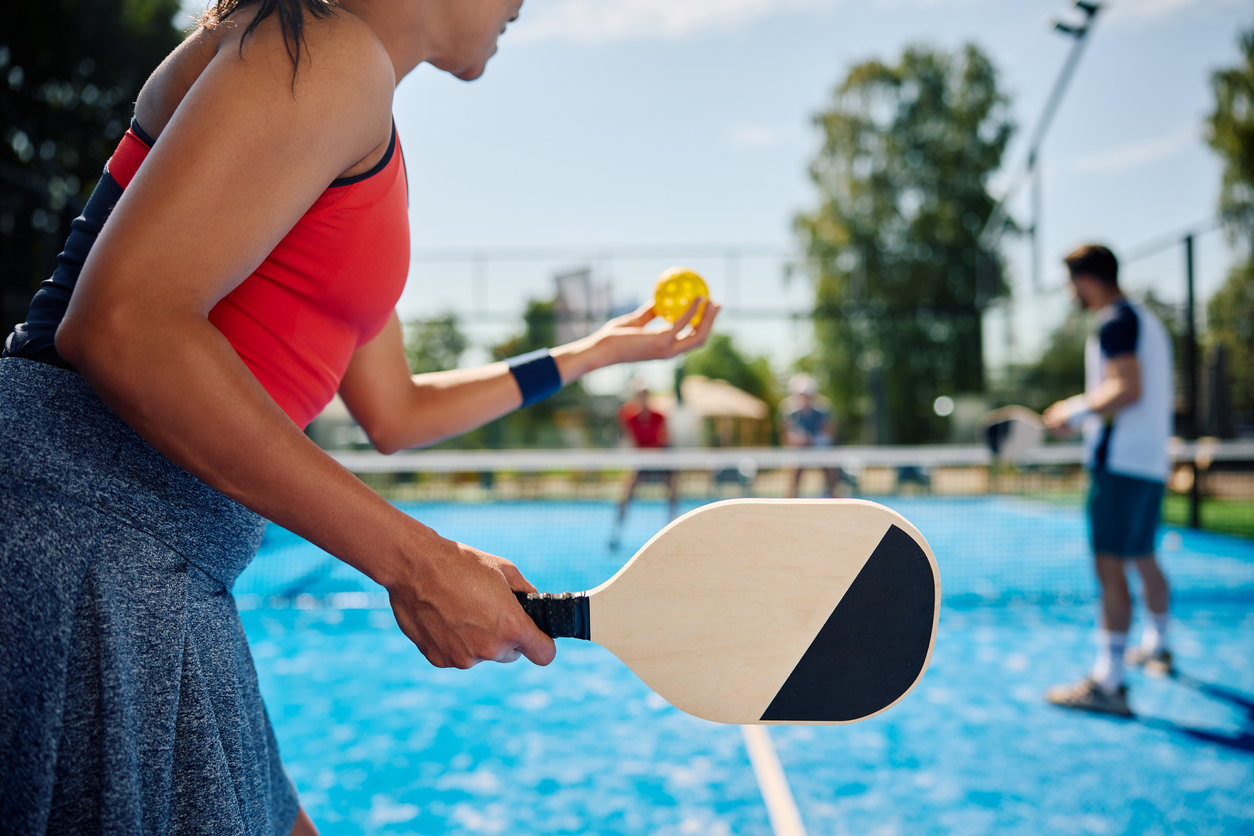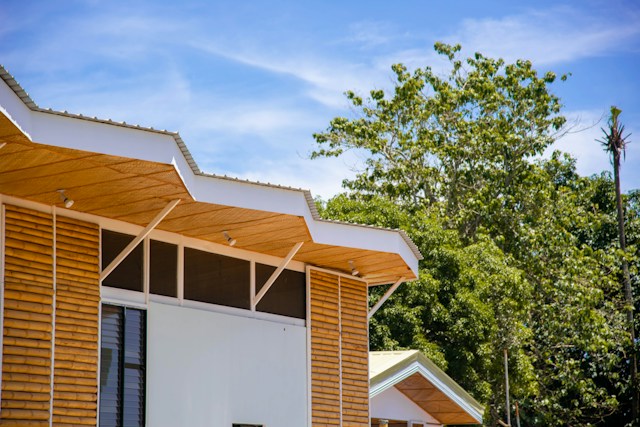Welcome to the world of pickleball, a sport that has taken the recreational scene by storm with its unique blend of tennis, badminton, and ping pong. Recognized for its adaptability and the ability to be enjoyed virtually anywhere, including your own backyard, pickleball has become a beloved pastime for all ages. Originating in the mid-1960s, this engaging game with simple rules and wide accessibility has gained popularity. Now, discover how to bring the excitement of pickleball to your outdoor space by building and maintaining your very own court.
Planning and preparing to build a pickleball court
Before constructing your pickleball court, thoroughly plan and prepare. Start by carefully evaluating your backyard space to ensure it can accommodate the court’s dimensions. For a doubles game, the standard measurement is 20 feet by 44 feet, while singles require 20 feet by 22 feet—ensure your space aligns with these dimensions.
Consider the orientation of the court concerning sunlight and shade. Positioning the court to minimize glare during play is key to comfortable conditions for participants and enhancing the overall playing experience.
Be sure to familiarize yourself with local zoning laws and homeowner association regulations that may impact the construction of a sports facility in your backyard. These regulations could encompass court placement, fencing, or lighting, requiring compliance for the successful execution of the project.
If your available space falls short of the standard regulation dimensions, USA Pickleball suggests flexibility in adjusting for a more relaxed experience. Scaling down the dimensions allows for enjoyable, casual gameplay—perfect for social gatherings or informal matches.
For those seeking a professional-grade experience, professional installation is worth considering. This ensures precision and adherence to official regulations, guaranteeing an authentic and top-tier playing surface. On the other hand, a hands-on DIY approach involving excavation and construction allows for customization to personal preferences, using materials like concrete to meet necessary play standards.
Materials and equipment for a DIY pickleball court

A DIY pickleball court project brings the thrill of this popular sport to your own backyard. Whether you’re a pickleball enthusiast or looking for a new outdoor activity, building your court allows for customization and a hands-on approach to creating a space tailored to your preferences. To start, let’s explore the materials and equipment you’ll need for a successful pickleball court construction.
Materials and Equipment for DIY Pickleball Court:
- Measuring Tools:
- Tape measure
- Chalk or marking paint
- Excavation Tools:
- Shovel
- Wheelbarrow
- Level
- Construction Materials:
- Outdoor-grade plywood or concrete for the playing surface
- Lumber for framing
- Concrete mix (if using concrete surface)
- Gravel for drainage
- Net and Posts:
- Regulation pickleball net
- Sturdy posts for net installation
- Fencing:
- Durable fencing material to surround the court
- Posts for fencing installation
- Paint or Stencils:
- Outdoor paint or court stencils for marking boundaries and lines
- Lighting (Optional):
- Outdoor court lighting for evening play
- Solar-powered or electric lights
- Safety Gear:
- Gloves
- Safety glasses
- Knee pads
- Compactor (for Concrete Surface):
- Plate compactor for compacting the base if using a concrete surface
- Finishing Touches:
- Benches or seating
- Scoreboard
Remember to adhere to local regulations and zoning laws during the construction process, and enjoy the satisfaction of creating your very own pickleball haven.
Court construction steps
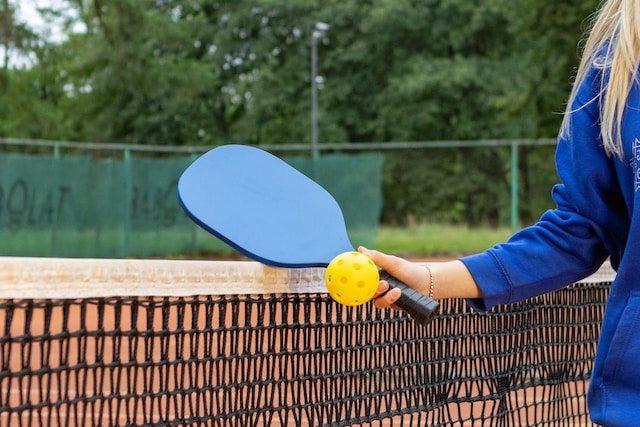
Constructing a pickleball court requires a systematic approach to ensure precision and adherence to official standards. Follow these steps for successful court construction:
Lay out the perimeter
Creating square outer boundaries for the pickleball court requires a strategic approach without complex calculations:
- Begin by establishing a straight line for one sideline. Extend this line to form a baseline at a 90-degree angle, followed by a diagonal (hypotenuse) to ascertain the squareness of the corner. Subsequently, complete the boundary by drawing simple straight lines.
- Mark a 44-foot straight line for one sideline, using a reference point like the edge of a concrete seam if available. Utilize chalk to draw the line along the tape measure’s length and mark the ends.
- Measure slightly over 20 feet from the sideline’s end at a 90-degree angle and mark the spot.
- Position the measuring tapes to intersect at 20 feet and 48 feet, 4 inches, marking an X and drawing the baseline.
- Repeat the process for the other end, ensuring a 44-foot length at a 90-degree angle and marking the final corner.
- Confirm the squareness of the court by measuring both diagonals, each ideally measuring 48 feet, 4 inches.
Pickleball Court Construction
Site Preparation
- Choose a suitable location for the pickleball court, ensuring it meets local zoning regulations.
- Clear the selected area of any vegetation, debris, or obstacles.
- Ensure proper drainage to prevent water accumulation on the court surface.
Excavation
- Excavate the area to the required depth, typically around 4 to 6 inches, depending on soil conditions and local specifications.
- Grade the excavated area to achieve a uniform slope for proper water drainage.
Sub-base Installation
- Install a stable sub-base material, such as crushed stone or aggregate, to provide a solid foundation.
- Compact the sub-base using a compactor to ensure stability and prevent settling.
Formwork
- Set up formwork using wooden or metal boards to define the perimeter of the court.
- Ensure the forms are level and properly secured.
Reinforcement (Optional)
- Depending on the project specifications, consider adding a layer of reinforcement mesh or rebar to improve the strength and durability of the concrete.
Concrete Mix
- Select a suitable concrete mix for the court surface, taking into account local climate conditions and any specific requirements.
- Ensure the concrete mix meets the necessary strength and thickness specifications.
Pouring Concrete
- Pour the concrete evenly within the formwork, starting from one end and working towards the other.
- Use a screed to level the concrete surface, ensuring it is flat and even.
Finishing
- Smooth the surface using a bull float to eliminate imperfections and achieve a consistent finish.
- Add any desired texture or surface treatment, such as a broom finish for better traction.
Curing
- Cover the freshly poured concrete with wet burlap or apply a curing compound to prevent rapid moisture loss.
- Allow the concrete to cure for the recommended period, typically at least seven days.
Mark the lines
Once the outer boundary is chalked, enhance the lines with tape, chalk dust, or make them more prominent. To delineate the kitchen (the area in front of the net) and centerline:
- Measure 15 feet along the sidelines from each baseline and draw the kitchen line across.
- Mark the center points of each baseline and kitchen line, then draw the centerline forming the right and left service courts.
- Emphasize these lines using tape or chalk.
Set the net
Assembling the portable net according to the manufacturer’s directions is important for its stability and functionality.
- Position the net precisely in the court’s center, 22 feet from each baseline, ensuring it aligns with the prescribed height standards. The net’s height should be 36 inches at the edges and 34 inches at the center, as specified by USA Pickleball.
- For permanent courts, securely place the net in concrete to ensure stability and durability.
By following these steps and paying attention to detail during planning, material selection, and court construction, you’ll create a high-quality pickleball court that provides years of enjoyment and space for friendly competition in your backyard.
Home insurance and liability considerations
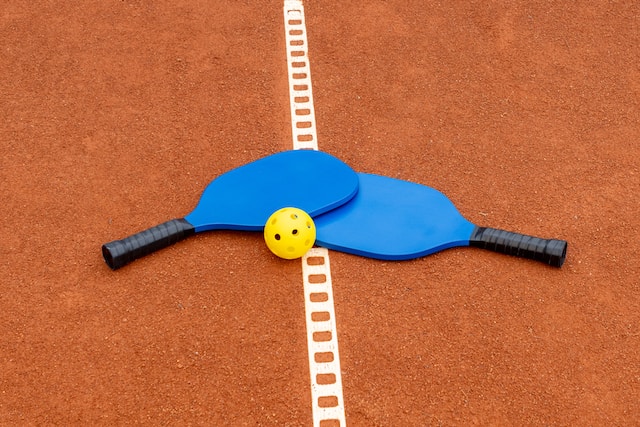
Creating a pickleball court in your backyard is an exciting project, but you need to contemplate the implications for your home insurance. When adding a pickleball court to your property, you have to understand your home insurance may provide coverage to protect against potential liabilities and damages associated with this amenity. Here’s a breakdown of how your insurance might come into play:
Relevant coverages:
- Coverage for other structures (Coverage B): Outdoor or separate building pickleball courts fall under this coverage. It may provide replacement cost coverage for unattached structures on your property.
- Personal property coverage (Coverage C): Your home insurance policy might offer protection for equipment or belongings stored on your pickleball court, usually based on the age of the personal property.
Location-specific details:
- Outdoor or separate building courts: For outdoor or separate building pickleball courts, Coverage B applies. It covers “other structures” on your property, which may provide replacement cost coverage subject to separate coverage limits.
Liability concerns:
- Liability risks associated with pickleball courts can result in substantial expenses if injuries occur on your property. Homeowners’ liability coverage often handles medical costs, lost wages, and legal defense costs arising from liability claims due to court-related injuries.
Maintenance and upkeep
Sustaining the quality and performance of a pickleball court over time requires maintenance. Regular care not only preserves its longevity but also ensures an enjoyable and safe environment for gameplay. Here are detailed insights into maintenance practices:
- Regular cleaning: Keep the court clean by sweeping away debris, leaves, and any loose materials. A gentle pressure wash can remove stubborn dirt and grime, preserving the court’s surface.
- Surface inspection: Regularly inspect the court surface for cracks, uneven areas, or signs of wear. Promptly address any issues to prevent deterioration and ensure plaer safety.
- Reapplication of coatings: Depending on the court surface material, periodic reapplication of coatings might be necessary to maintain its texture and grip. This step is key in ensuring a consistent playing surface.
- Net and post maintenance: Check and tighten net tension periodically. Inspect net posts for stability and adjust as needed to maintain proper height and alignment.
- Weather protection: Covering the court during harsh weather conditions, particularly in extreme climates, can prevent damage caused by prolonged exposure to elements like intense sunlight or heavy rain.
Serving sustainability: Making pickleball eco-friendly
As the sport’s popularity continues to grow, so does the opportunity to positively impact the environment. By embracing eco-friendly practices, pickleball players can contribute to a more sustainable and environmentally conscious pickleball community.
- Green gear: Choosing sustainable equipment When it comes to pickleball equipment, there’s a growing trend towards sustainability. Opt for paddles made from recycled or eco-friendly materials. Some companies are pioneering the use of sustainable materials in paddle construction, reducing the sport’s environmental footprint. Additionally, explore biodegradable pickleballs as an alternative to traditional plastic ones, minimizing the impact on landfills.
- Environmental impact of court construction As pickleball courts are built and maintained, consider the environmental impact of construction materials. Using permeable surfaces allows rainwater to pass through, reducing runoff and supporting groundwater recharge. This makes the court more environmentally friendly and helps in water conservation efforts.
- Energy efficiency on the court Implementing energy-efficient lighting systems for outdoor courts is a significant step towards reducing energy consumption.
- Promoting eco-friendly practices Within the pickleball community, it’s essential to promote eco-friendly habits. Encourage players to pick up after themselves, recycle used pickleball paddles, and minimize waste during events.
- Local and Sustainable Sourcing When organizing events, opt for local and sustainable products for refreshments and event materials. Supporting local businesses benefits the community and reduces the environmental impact of transportation and packaging.
Pickleball court budgeting and cost
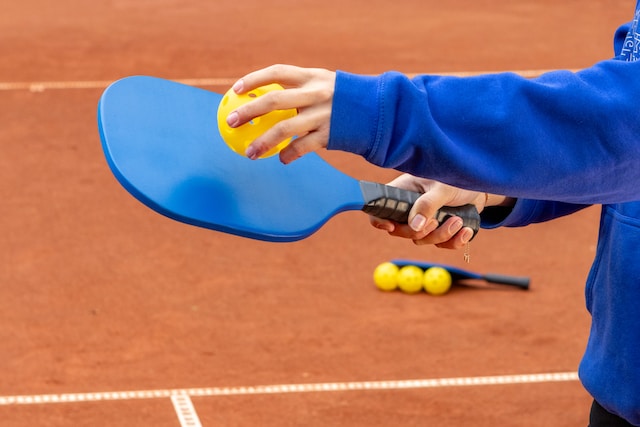
Numerous cost factors come into play when constructing and maintaining a pickleball court, spanning initial construction expenses to long-term maintenance and potential repairs. Review the following cost factors:
- Initial construction costs: Determine expenses for materials, labor (if applicable), paint, net, and other equipment required for court construction. Researching and obtaining multiple quotes can help in budget planning.
- Surface maintenance costs: Factor in costs for routine maintenance, including cleaning materials, coatings, and occasional repairs to ensure the court remains in top condition.
- Long-term repairs: Anticipate potential repair costs for addressing surface cracks, drainage issues, or structural wear over time. Allocating funds for periodic professional inspections and repairs can prevent costly issues down the line.
- Replacement and upgrades: Plan for eventual replacements or upgrades of nets, posts, or other equipment as they wear out or if you opt for enhancements to improve playing conditions.
- Insurance and liability: Assess potential increases in insurance premiums or additional liability coverage associated with having a sports court on your property.
Additional tips
Here are additional insights to enhance your pickleball court experience:
- Regular use encouragement: Regular play helps maintain the court surface. Encourage consistent use among family and friends to prevent stagnation, keeping the court in better condition.
- Community engagement: Organize tournaments or social events to foster community engagement and ensure regular court usage, further justifying the investment.
- Seasonal adjustments: Adapt maintenance practices based on seasonal changes. For instance, winterizing the court in colder climates protects it from frost or ice damage.
- Professional consultation: Seek advice from court construction professionals or maintenance specialists for specific guidance tailored to your court type and local climate conditions.
- Documentation: Keep records of maintenance schedules, repairs, and any professional services rendered, aiding in tracking expenses and ensuring timely upkeep.
- Coaching: Refine your game with expert coaching tailored to your court. Elevate your skills, tactics, and enjoyment of the game, transforming your court into a training ground for mastery.
Crafting your own pickleball court for home use isn’t just about construction; it’s about establishing a hub for shared enjoyment and community bonding. Understanding the necessary steps, acknowledging its distinctive benefits, and being mindful of insurance and maintenance ensures a space conducive to physical activity, social connection, and boundless entertainment.
Pickleball transcends its gameplay; it’s a catalyst for bringing people together, fostering connections, and nurturing a vibrant community spirit. So, gear up to embrace the thrill of pickleball within your backyard oasis and become part of this lively and engaging pickleball community!
